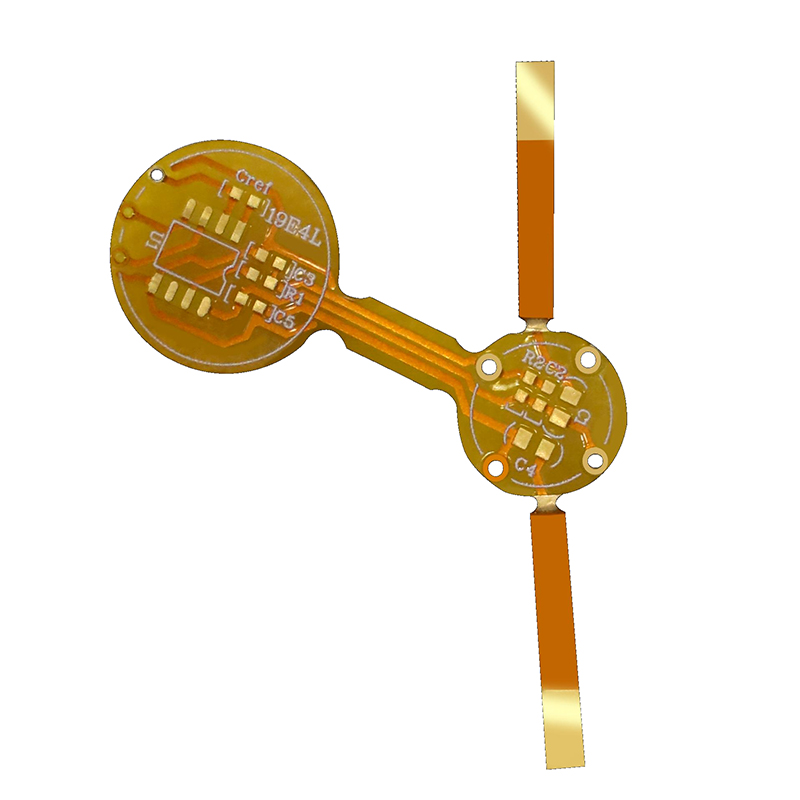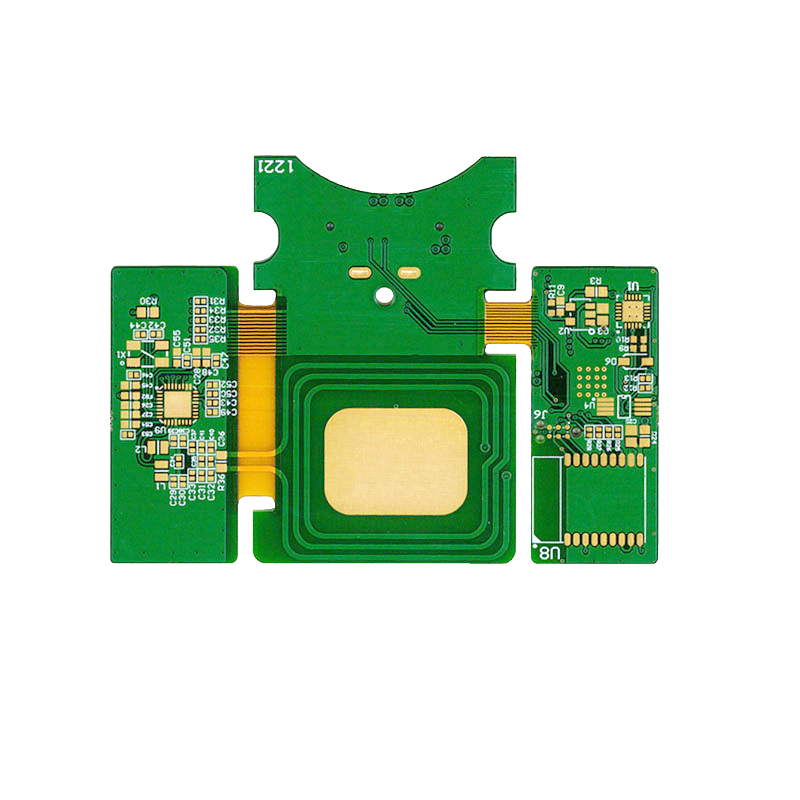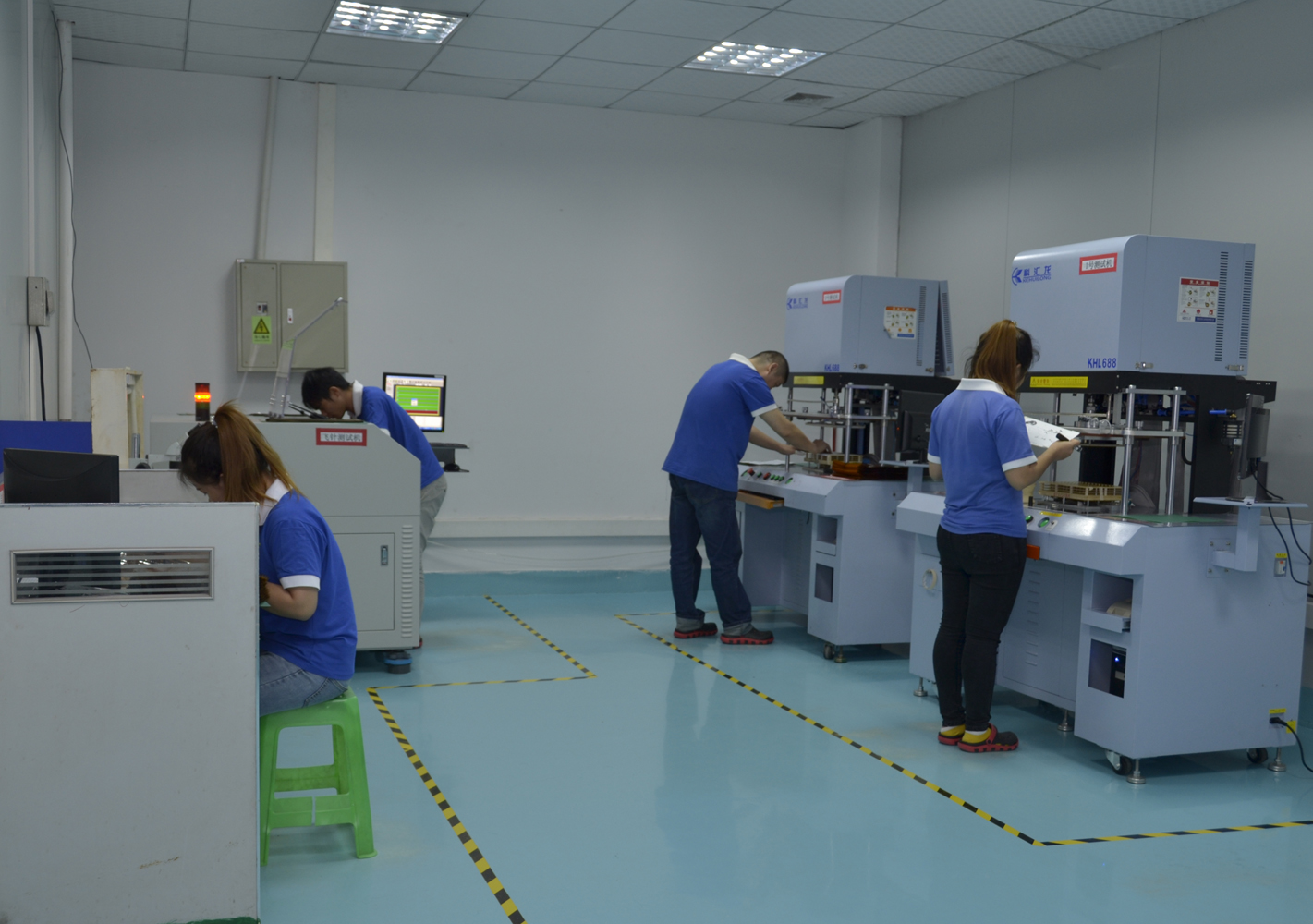This article will provide a comprehensive overview of the surface treatment process for FPC Flex PCB manufacturing. From the importance of surface preparation to the different surface coating methods, we will cover key information to help you understand and implement the surface preparation process effectively.
Introduction:
Flexible PCBs (Flexible Printed Circuit Boards) are gaining popularity across various industries for their versatility and ability to adapt to complex shapes. Surface preparation processes play a vital role in ensuring the optimum performance and reliability of these flexible circuits. This article will provide a comprehensive overview of the surface treatment process for FPC Flex PCB manufacturing. From the importance of surface preparation to the different surface coating methods, we will cover key information to help you understand and implement the surface preparation process effectively.
Contents:
1. The importance of surface treatment in FPC flex PCB manufacturing:
Surface treatment is critical in FPC Flexible boards manufacturing as it serves multiple purposes. It facilitates soldering, ensures good adhesion, and protects conductive traces from oxidation and environmental degradation. The choice and quality of surface treatment directly affects the reliability and overall performance of the PCB.
Surface finishing in FPC Flex PCB manufacturing serves several key purposes. First, it facilitates soldering, ensuring proper bonding of electronic components to the PCB. The surface treatment enhances solderability for a stronger and more reliable connection between the component and the PCB. Without proper surface preparation, solder joints can become weak and prone to failure, resulting in inefficiencies and potential damage to the entire circuit.
Another important aspect of surface preparation in FPC Flex PCB manufacturing is ensuring good adhesion. FPC flex PCBs often experience severe bending and flexing during their service life, which puts stress on the PCB and its components. The surface treatment provides a layer of protection to ensure that the component is firmly adhered to the PCB, preventing potential detachment or damage during handling. This is especially important in applications where mechanical stress or vibration are common.
Additionally, the surface treatment protects the conductive traces on the FPC Flex PCB from oxidation and environmental degradation. These PCBs are constantly exposed to various environmental factors such as humidity, temperature changes and chemicals. Without adequate surface preparation, conductive traces can corrode over time, causing electrical failure and circuit failure. The surface treatment acts as a barrier, protecting the PCB from the environment and increasing its lifetime and reliability.
2.Common surface treatment methods for FPC flex PCB manufacturing:
This section will discuss in detail the most commonly used surface treatment methods in FPC Flexible boards manufacturing, including Hot Air Solder Leveling (HASL), Electroless Nickel Immersion Gold (ENIG), Organic Solderability Preservative (OSP), Immersion Tin (ISn) and electroplating (E-plating). Each method will be explained along with its advantages and disadvantages.
Hot Air Solder Leveling (HASL):
HASL is a widely used surface treatment method due to its effectiveness and cost-effectiveness. The process involves coating the copper surface with a layer of solder, which is then heated with hot air to create a smooth, flat surface. HASL offers excellent solderability and is compatible with a wide variety of components and soldering methods. However, it also has limitations such as uneven surface finish and possible damage to delicate marks during processing.
Electroless Nickel Immersion Gold (ENIG):
ENIG is a popular choice in flex circuit manufacturing due to its superior performance and reliability. The process involves depositing a thin layer of nickel on the copper surface through a chemical reaction, which is then immersed in an electrolyte solution containing gold particles. ENIG has excellent corrosion resistance, uniform thickness distribution and good solderability. However, high process-related costs and potential black pad issues are some of the drawbacks to consider.
Organic Solderability Preservative (OSP):
OSP is a surface treatment method that involves coating the copper surface with an organic thin film to prevent it from oxidizing. This process is environmentally friendly as it eliminates the need for heavy metals. OSP provides a flat surface and good solderability, making it suitable for fine pitch components. However, OSP has a limited shelf life, is sensitive to handling, and requires proper storage conditions to maintain its effectiveness.
Immersion tin (ISn):
ISn is a surface treatment method that involves immersing a flexible circuit in a bath of molten tin. This process forms a thin layer of tin on the copper surface, which has excellent solderability, flatness and corrosion resistance. ISn provides a smooth surface finish making it ideal for fine pitch applications. However, it has limited heat resistance and may require special handling due to tin’s brittleness.
Electroplating (E plating):
Electroplating is a common surface treatment method in flexible circuit manufacturing. The process involves depositing a metal layer on the copper surface through an electrochemical reaction. Depending on the application requirements, electroplating is available in a variety of options such as gold, silver, nickel or tin plating. It offers excellent durability, solderability and corrosion resistance. However, it is relatively expensive compared to other surface treatment methods and requires complex equipment and controls.
3.Precautions for choosing the correct surface treatment method in FPC flex PCB manufacturing:
Choosing the right surface finish for FPC flexible circuits requires careful consideration of various factors such as application, environmental conditions, solderability requirements, and cost-effectiveness. This section will provide guidance on selecting an appropriate method based on these considerations.
Know customers’ requirements:
Before delving into the various surface treatments available, it is crucial to have a clear understanding of customers’ requirements. Consider the following factors:
Application:
Determine the intended application of your FPC flexible PCB. Is it for consumer electronics, automotive, medical or industrial equipment? Each industry may have specific requirements, such as resistance to high temperatures, chemicals or mechanical stress.
Environmental Conditions:
Evaluate the environmental conditions that the PCB will encounter. Will it be exposed to moisture, humidity, extreme temperatures or corrosive substances? These factors will influence the method of surface preparation to provide the best protection against oxidation, corrosion and other degradation.
Solderability requirements:
Analyze the solderability requirements of FPC flexible PCB. Will the board go through a wave soldering or reflow soldering process? Different surface treatments have different compatibility with these welding techniques. Taking this into account will ensure reliable solder joints and prevent problems such as solderability defects and opens.
Explore Surface Treatment Methods:
With a clear understanding of customers’ requirements, it’s time to explore the available surface treatments:
Organic Solderability Preservative (OSP):
OSP is a popular surface treatment agent for FPC flexible PCB due to its cost-effectiveness and environmental protection characteristics. It provides a thin protective layer that prevents oxidation and facilitates soldering. However, OSP may have limited protection from harsh environments and a shorter shelf life than other methods.
Electroless Nickel Immersion Gold (ENIG):
ENIG is widely used in various industries because of its excellent solderability, corrosion resistance and flatness. The gold layer ensures a reliable connection, while the nickel layer provides excellent oxidation resistance and harsh environment protection. However, ENIG is relatively expensive compared to other methods.
Electroplated Hard Gold (Hard Gold):
Hard gold is very durable and provides excellent contact reliability, making it suitable for applications involving repeated insertions and high wear environments. However, it is the most expensive finish option and may not be required for every application.
Electroless Nickel Electroless Palladium Immersion Gold (ENEPIG):
ENEPIG is a multifunctional surface treatment agent suitable for various applications. It combines the advantages of nickel and gold layers with the added benefit of an intermediate palladium layer, providing excellent wire bondability and corrosion resistance. However, ENEPIG tends to be more expensive and complex to process.
4.Comprehensive Step-by-Step Guide to Surface Preparation Processes in FPC flex PCB manufacturing:
To ensure the successful implementation of surface preparation processes, it is crucial to follow a systematic approach. This section will provide a detailed step-by-step guide covering pretreatment, chemical cleaning, flux application, surface coating and post-treatment processes. Each step is explained thoroughly, highlighting relevant techniques and best practices.
Step 1: Preprocessing
Pretreatment is the first step in surface preparation and includes cleaning and removal of surface contamination.
First inspect the surface for any damage, imperfections or corrosion. These issues must be resolved before further action can be taken. Next, use compressed air, a brush, or a vacuum to remove any loose particles, dust, or dirt. For more stubborn contamination, use a solvent or chemical cleaner formulated specifically for the surface material. Make sure the surface is thoroughly dry after cleaning, as residual moisture can hinder subsequent processes.
Step 2: Chemical Cleaning
Chemical cleaning involves removing any remaining contaminants from the surface.
Choose the appropriate cleaning chemical based on the surface material and type of contamination. Apply cleaner evenly to surface and allow sufficient contact time for effective removal. Use a brush or scouring pad to gently scrub the surface, paying attention to hard-to-reach areas. Rinse the surface thoroughly with water to remove any residue of the cleaner. The chemical cleaning process ensures that the surface is completely clean and ready for subsequent processing.
Step 3: Flux Application
The application of flux is critical to the brazing or soldering process as it promotes better adhesion and reduces oxidation.
Select the appropriate flux type according to the materials to be connected and the specific process requirements. Apply flux evenly to the joint area, ensuring complete coverage. Be careful not to use excess flux as it may cause soldering problems. Flux should be applied immediately prior to the soldering or soldering process to maintain its effectiveness.
Step 4: Surface Coating
Surface coatings help protect surfaces from environmental conditions, prevent corrosion and enhance their appearance.
Before applying the coating, prepare according to the manufacturer’s instructions. Apply the coat carefully using a brush, roller or sprayer, ensuring even and smooth coverage. Note the recommended drying or curing duration between coats. For best results, maintain proper environmental conditions such as temperature and humidity levels during curing.
Step 5: Post-processing process
The post-treatment process is critical to ensure the longevity of the surface coating and the overall quality of the prepared surface.
After the coating is fully cured, inspect for any imperfections, bubbles or unevenness. Correct these problems by sanding or polishing the surface, if necessary. Regular maintenance and inspections are essential to identify any signs of wear or damage in the coating so that it can be promptly repaired or reapplied if required.
5.Quality Control and Testing in FPC flex PCB manufacturing surface treatment process:
Quality control and testing are essential to verify the effectiveness of surface preparation processes. This section will discuss various testing methods, including visual inspection, adhesion testing, solderability testing, and reliability testing, to ensure consistent quality and reliability of surface-treated FPC Flex PCBs manufacturing.
Visual inspection:
Visual inspection is a basic but important step in quality control. It involves visually inspecting the surface of the PCB for any defects such as scratches, oxidation or contamination. This inspection can use optical equipment or even a microscope to detect any anomalies that may affect PCB performance or reliability.
Adhesion Testing:
Adhesion testing is used to evaluate the strength of adhesion between a surface treatment or coating and the underlying substrate. This test ensures that the finish is firmly bonded to the PCB, preventing any premature delamination or peeling. Depending on specific requirements and standards, different adhesion testing methods can be used, such as tape testing, scratch testing or pull testing.
Solderability Testing:
Solderability testing verifies the ability of a surface treatment to facilitate the soldering process. This test ensures that the processed PCB is capable of forming strong and reliable solder joints with electronic components. Common solderability testing methods include solder float testing, solder wetting balance testing, or solder ball measurement testing.
Reliability Testing:
Reliability testing evaluates the long-term performance and durability of surface-treated FPC Flex PCBs under various conditions. This test enables manufacturers to evaluate a PCB’s resistance to temperature cycling, humidity, corrosion, mechanical stress, and other environmental factors. Accelerated life testing and environmental simulation tests, such as thermal cycling, salt spray testing or vibration testing, are often used for reliability assessment.
By implementing comprehensive quality control and testing procedures, manufacturers can ensure that surface-treated FPC Flex PCBs comply with required standards and specifications. These measures help to detect any defects or inconsistencies early in the production process so that corrective actions can be taken in a timely manner and improve overall product quality and reliability.
6.Solving surface preparation problems in FPC flex PCB manufacturing:
Surface treatment issues may occur during the manufacturing process, affecting the overall quality and performance of the FPC flexible PCB. This section will identify common surface preparation issues and provide troubleshooting tips to effectively overcome these challenges.
Poor Adhesion:
If the finish does not adhere properly to the PCB substrate, it may result in delamination or peeling. This can be due to the presence of contaminants, insufficient surface roughness, or insufficient surface activation. To combat this, make sure the PCB surface is thoroughly cleaned to remove any contamination or residue before handling. Additionally, optimize surface roughness and ensure proper surface activation techniques, such as plasma treatment or chemical activation, are used to enhance adhesion.
Uneven coating or plating thickness:
Uneven coating or plating thickness can be the result of insufficient process control or variations in surface roughness. This problem affects the performance and reliability of the PCB. To overcome this problem, establish and monitor appropriate process parameters such as coating or plating time, temperature and solution concentration. Practice proper agitation or agitation techniques during coating or plating to ensure uniform distribution.
Oxidation:
Surface-treated PCBs may oxidize due to exposure to moisture, air, or other oxidizing agents. Oxidation can lead to poor solderability and reduce the overall performance of the PCB. To mitigate oxidation, use appropriate surface treatments such as organic coatings or protective films to provide a barrier against moisture and oxidizing agents. Use proper handling and storage practices to minimize exposure to air and moisture.
Contamination:
Contamination of the PCB surface can negatively affect the adhesion and solderability of the surface finish. Common contaminants include dust, oil, fingerprints, or residue from previous processes. To combat this, establish an effective cleaning program to remove any contaminants prior to surface preparation. Use appropriate disposal techniques to minimize bare-hand contact or other sources of contamination.
Poor Solderability:
Poor solderability can be caused by lack of surface activation or contamination on the PCB surface. Poor solderability can lead to weld defects and weak joints. To improve solderability, ensure proper surface activation techniques such as plasma treatment or chemical activation are used to enhance wetting of the PCB surface. Also, implement an effective cleaning program to remove any contaminants that may impede the welding process.
7. Future development of FPC flex board manufacturing surface treatment:
The field of surface finishing for FPC flexible PCBs continues to evolve to meet the needs of emerging technologies and applications. This section will discuss potential future developments in surface treatment methods such as new materials, advanced coating technologies, and environmentally friendly solutions.
A potential development in the future of FPC surface treatment is the use of new materials with enhanced properties. Researchers are exploring the use of novel coatings and materials to improve the performance and reliability of FPC flexible PCBs. For example, self-healing coatings are being researched, which can repair any damage or scratches to the surface of a PCB, thereby increasing its lifespan and durability. In addition, materials with improved thermal conductivity are being explored to enhance FPC’s ability to dissipate heat for better performance in high-temperature applications.
Another future development is the advancement of advanced coating technologies. New coating methods are being developed to provide more precise and uniform coverage on FPC surfaces. Techniques such as Atomic Layer Deposition (ALD) and Plasma Enhanced Chemical Vapor Deposition (PECVD) allow better control of coating thickness and composition, resulting in improved solderability and adhesion. These advanced coating technologies also have the potential to reduce process variability and improve overall manufacturing efficiency.
In addition, there is an increasing emphasis on environmentally friendly surface treatment solutions. With ever-increasing regulations and concerns about the environmental impact of traditional surface preparation methods, researchers are exploring safer, more sustainable alternative solutions. For example, water-based coatings are gaining popularity due to their lower volatile organic compound (VOC) emissions compared to solvent-borne coatings. In addition, efforts are underway to develop environmentally friendly etching processes that do not produce toxic by-products or waste.
To sum up, the surface treatment process plays a vital role in ensuring the reliability and performance of the FPC soft board. By understanding the importance of surface preparation and choosing an appropriate method, manufacturers can produce high-quality flexible circuits that meet the needs of various industries. Implementing a systematic surface treatment process, conducting quality control tests, and effectively addressing surface treatment issues will contribute to the success and longevity of FPC flexible PCBs in the market.
Post time: Sep-08-2023
Back









